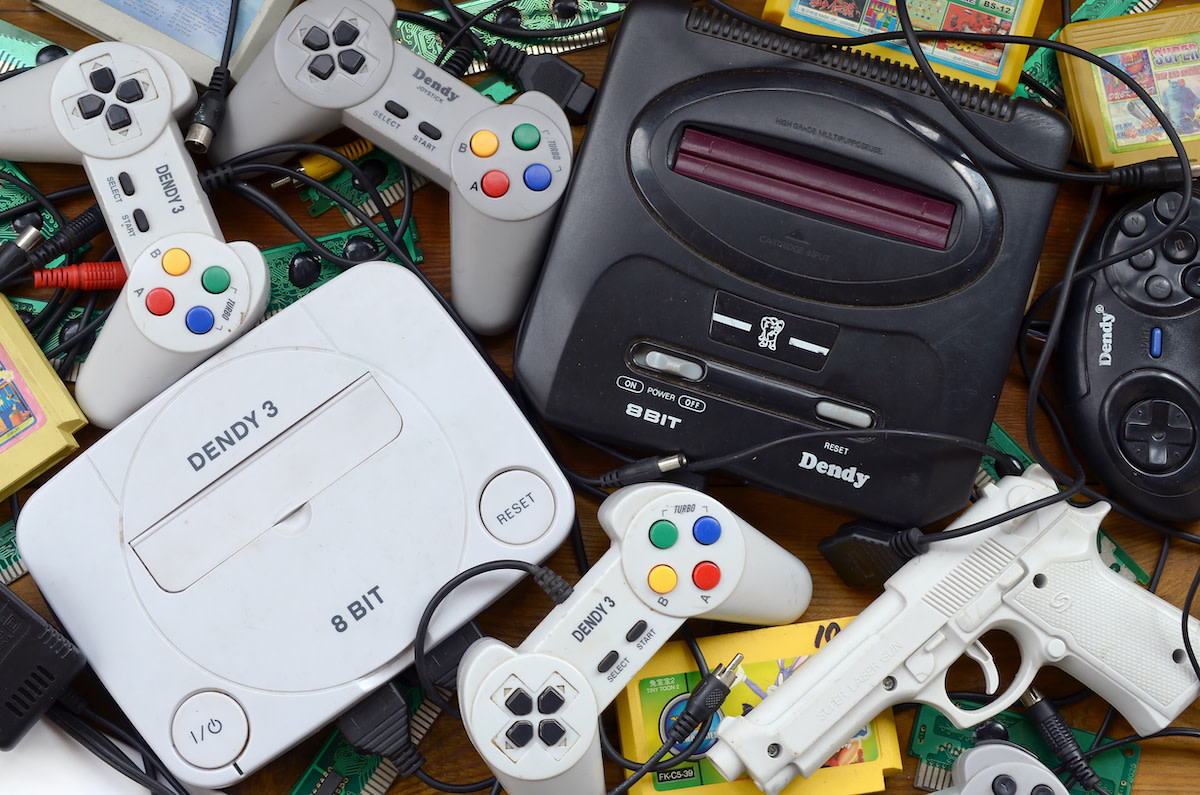Who Invented Video Games? A History of Video Game Consoles
Written by MasterClass
Last updated: Jan 28, 2022 • 4 min read
The earliest video games premiered just after World War II, with the first home video game system becoming available prior to the 1970s. Learn more about the luminaries who invented video games.
Learn From the Best
What Are Video Games?
Video games are computer games that allow users to control motion on a screen and directly affect the action therein. The video game industry started out selling simple products—virtual games of ping-pong, checkers, and the like. Since these early days, the industry has continuously progressed to include more and more advanced storytelling, graphic quality, and usability in its wares across a multitude of video game genres.
Who Invented Video Games?
Several people can lay claim to inventing video games, but a few stand out as the most deserving candidates. Thomas T. Goldsmith and Estle R. Mann created the cathode-ray tube amusement device, an early and rudimentary prototype of an electronic game system, in the late 1940s. William Higinbotham built Tennis for Two, largely perceived to be the first video game proper, in 1958. Ralph H. Baer created the Magnavox Odyssey, the first home video game console, which became available in 1972.
Why Were Video Games Invented?
After the advent of electronic toys in the mid-twentieth century, it was only a matter of time before electronic games would appear on the market, too. Video games became available nearly as quickly as technological advancements for business computing and defensive weapons did. This served as a reminder of humankind’s need to turn their latest innovations into tools for both work and play alike.
A Brief History of the Invention of Video Games
The history of video games began in the late 1940s and rapidly improved throughout the rest of the twentieth and twenty-first centuries. Several key individuals, inventions, and time periods stand out as having laid the groundwork for this technology to truly flourish.
- The cathode-ray tube amusement device: Thomas T. Goldsmith and Estle R. Mann experimented with cathode-ray tubes as a means for diversion rather than pure scientific study. These tubes could shoot different electric light beams as you turned knobs on the device. The creators decided to sell an “amusement device” with colored slides consumers could place on their television sets. The aim of the game was to hit targets on these slides with the ray. This sense of interactivity between a controller and a screen laid the groundwork for future video games.
- Higinbotham’s Tennis for Two: William Higinbotham worked with cathode-ray tubes in his early years at the MIT Radiation Lab. His experience with this technology, alongside the time he spent with analog computers at the Brookhaven National Laboratory, made him think people would be more likely to take an interest in computing if they could use it to play a game. He soon created Tennis for Two, the first actual video game, with an oscilloscope (the same kind of computer hospitals use to detect vital signs).
- Ralph Baer, father of video games: While others preceded him, Ralph H. Baer is the man most experts recognize as “the father of video games” because of the hand he had in introducing them to a mass audience in the United States. After fleeing Nazi Germany as a youth, he settled down in New York, eventually gaining a television engineering degree from the American Television Institute of Technology. In the following years, he took a job with Sanders Associates, a defense contractor business. It was there he began to develop the first home video game console as a side project.
- The Brown Box: Ralph Baer spent most of the 1960s developing one prototype after another to allow home users to play increasingly sophisticated games. His Brown Box invention connected to a television set so that users could play checkers, tic-tac-toe, ping-pong, and other games on their screens with hand-operated controllers. Although the product was a hit with his Sanders Associates coworkers, he knew he would need to go elsewhere to mass-produce his invention.
- The Magnavox Odyssey: Baer eventually settled on Magnavox to distribute his invention in 1972 as the Magnavox Odyssey. This feat of ingenuity served as the first video game console to hit the mass market. Anyone could now turn their television screen into an interactive gaming device. The Smithsonian’s National Museum of American History features this groundbreaking product as a tribute to both its success and continuing influence.
- The rise of competition: After the release of the Magnavox Odyssey, plenty of other entrepreneurs hoped to find success with inventions of their own. Arcade games like Pac-Man swept the nation throughout the 1970s and ‘80s. Nolan Bushnell and Ted Dabney’s Atari 2600 console allowed home users an even greater range of gaming choices. Other game developers rapidly developed new products to compete in the marketplace for attention and sales. Baer himself became the inventor and video game designer behind Simon, an interactive electronic game you could play without attaching it to your screen.
- Cementing of Baer’s legacy: Contemporary gaming consoles like Nintendo’s Wii, Sony’s Playstation, and Microsoft’s Xbox all owe something to the legacy of Ralph Baer’s Magnavox Odyssey. As these consoles took off in popularity in the early twenty-first century, the National Inventors Hall of Fame inducted Baer into their ranks, and President George W. Bush granted him the National Medal of Technology in 2006.
Learn More
Get the MasterClass Annual Membership for exclusive access to video lessons taught by the world’s best, including Will Wright, Paul Krugman, Stephen Curry, Annie Leibovitz, and more.
